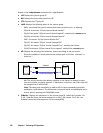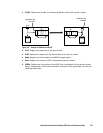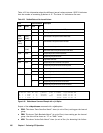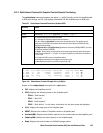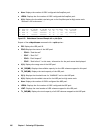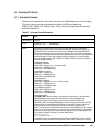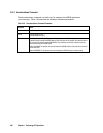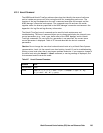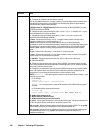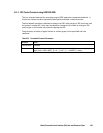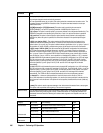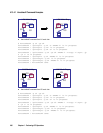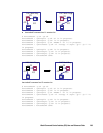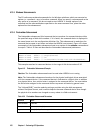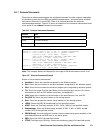
264 Chapter 4 Performing CCI Operations
Parameter Value
Options -h: Displays Help/Usage and version information.
-q: Terminates the interactive mode and exits the command.
-z or -zx (OpenVMS cannot use the -zx option): Makes the horcctl command enter the interactive mode.
The -zx option guards performing of the HORCM in the interactive mode. When this option detects a
HORCM shut down, interactive mode terminates.
-I[H][M][instance#] or -I[TC][SI][instance#] Specifies the command as [HORC]/[HOMRCF], and used
for specifying instance# of HORCM.
-d: Interprets the control options following this option (-l <level>, -b <y/n>, -s <size(KB)>, and -t <type>)
as the parameters of the TrueCopy commands.
-c: Interprets the control options following this option (-l <level>, -b <y/n> and -t <type>) as the
parameters of the HORC Manager (HORCM).
-l <level>: Sets the trace level (range = 0 to 15). If a negative value is specified, the trace mode is
canceled. A negative value “n” must be specified as “--n”.
Caution: Do not change the trace level unless directed to do so by a Hitachi Data Systems
representative. Level 4 is the normal trace level setting. Levels 0-3 are for troubleshooting. Setting a trace
level other than 4 may impact problem resolution. If you request a change of the trace level using the
horcctl -l <level> command, a warning message is displayed, and this command enters interactive
mode.
-b <y/n>: Sets the trace writing mode: Y = buffer mode, N = synchronous mode.
-t <type>: Sets the trace type (range = 0 to 511). When this option is used, only traces of the specified
type are output. One or more values can be specified.
-s <size(KB)>: Changes the default trace buffer size, which is 1 MB, in units of 1024 bytes.
-S: Shuts down HORCM.
-D: Displays the command device name currently used by HORCM. If the command device is blocked
due to online maintenance (microcode replacement) of the storage system, you can check the command
device name in advance using this option.
-C: Changes the command device name being used by HORCM and displays the new command device
name. If the command device is blocked due to online maintenance (microcode replacement) of the
storage system, you can change the command device in advance using this option.
[NOTE]:
horcctl -D -C command designates a protection mode command device by adding ‘*’ to the
device file name as follows:
HP-UX Example:
# horcctl -D
Current control device = /dev/rdsk/c0t0d0*
"horcctl -DI
" command shows the number of RM instances of when HORCM has being started
as follows:
HP-UX Example without command device security:
# horcctl -DI
Current control device = /dev/rdsk/c0t0d0 AI = 14 TI = 0 CI = 1
AI : NUM of Actual instances in use
TI : NUM of temporary instances in RAID
CI : NUM of instances using current (own) instance
-u <unitid>: Used to specify the unit ID of a command device as the target. This option is effective when
the -D or -C option is specified. If this option is not specified, the unit ID is 0.
-ND -g <group>: Displays the network address and port name being used by HORCM. The -g <group>
option is used to specify the group name defined in the configuration definition file.
-NC -g <group>: Changes the network address and port name being used by HORCM and displays the
new network address name. The -g <group> option specifies the group name defined in the
configuration definition file.



